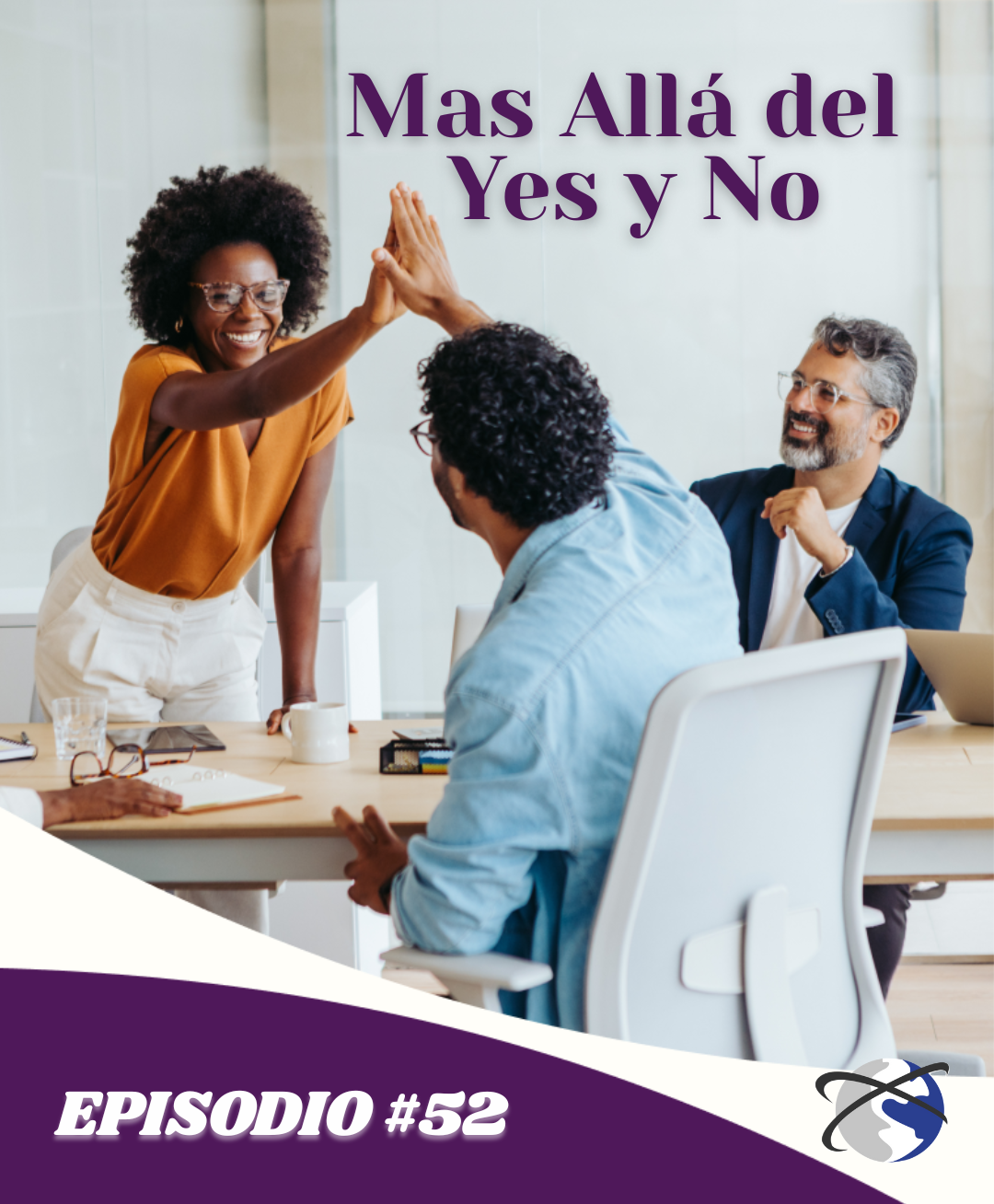Ya no uses solo YES / NO en Inglés
Alternativas para YES / NO. – SECCION: Conversation / Speaking Activity – Clases de conversación #52
Welcome to InglesTotal,
Podcast: Download
Subscribe: Apple Podcasts | Spotify | TuneIn | RSS
Hoy tenemos una nueva publicación en nuestra sección y curso de Speaking o conversación en inglés. Hoy les enseñamos alternativas en inglés para que ya no solo uses YES / NO en inglés. UNASE a nuestra comunidad en WHATSAPP y mande sus preguntas. Siga este enlace https://chat.whatsapp.com/I81V7uakMSk2bCmdD2qibE?mode=ems_copy_t .Tambien siga la clase con el audio que incluye una conversación al final para solventar lo aprendido. Esto le permitirá ser un poco mas natural cuando se expresa en inglés Para poder ver todas nuestras lecciones hasta la fecha en esta sección pueden ir a ESTE VINCULO.
Esta clase escrita viene acompañada de un audio que pueden encontrar al comienzo de esta publicación. Tampoco olviden de seguir redes sociales en Facebook y Twitter para más información de nuestros cursos gratis y sigan. Nuestros audios están en SPOTIFY (enlace aquí) y los que quieran compararme un café o donar para que esta pagina siga adelante pueden hacerlo usando este vinculo.
¿Te has dado cuenta de que muchas veces, cuando te hacen una pregunta en inglés, solo respondes con un simple “yes” o “no”? No estás solo. Es algo que casi todos los estudiantes hacen, pero… ¿sabías que eso puede hacer que tu inglés suene básico o poco natural? Los hablantes nativos no solo dicen solo “yes” o “no”. Ellos usan una variedad de palabras que transmiten emoción, seguridad, sorpresa o incluso duda , y eso es lo que hace que suenen tan naturales y seguros al hablar.
En esta lección vas a descubrir 20 formas avanzadas de responder preguntas sin usar “yes” ni “no”, y te aseguro que cuando empieces a usarlas, tu inglés sonará más fluido, auténtico y con mucha más personalidad.
Level Up Your English: Change “Yes” and “No” for better communicative alternatives
Be honest: Do you ever feel like a broken record, just hitting “yes” or “no” for almost every question in English or maybe you want to comment ans react but lack more communicative ways?
If so, you’re missing a HUGE chance to sound fluent, natural, and genuinely impressive.
The truth is, native English speakers rarely just say “yes” or “no.” They use a wide range of words to inject their answers with emotion, certainty, and personality. By swapping out those plain old two-letter words, you can totally transform how you communicate.
*** “Responder solo sí” y “no” son muy comunes, pero en inglés, usar más vocabulario te hace sonar mucho más avanzado y además injectas emoción y personalidad a tus respuestas

💪 Part 1: When You’re 100% Sure (The Strong “Yes”)
When you know the answer for sure, leave the weak “yes” behind and go with a strong signal of confidence:
- Absolutely: The ultimate, confident “yes.”
- Need a coffee break? — “Absolutely, I can’t live without it.”
- Totally: Enthusiastic agreement, no holds barred.
- Do you think we should go traveling? — “Totally, it’s my passion!”
- Exactly: Perfect for agreeing with someone else’s statement.
- The traffic here is a nightmare! — “Exactly! It’s getting worse every day.”
- Certainly: A polite but confident “yes,” great for offering help.
- Could you lend me a hand with these boxes? — “Certainly.“
- Indeed: Sounds elegant and is a formal way to agree strongly.
- You really seem to enjoy your job, don’t you? — “Indeed, I do.”
- Definitely: You are sure, zero doubt.
- Are you coming to the party tonight? — “Definitely!“
*** Practica la pronunciación de “Absolutely” y “Definitely”. Son muy comunes y te darán un toque nativo. Recuerda que “Indeed” es más formal
⚖️ Part 2: When You’re on the Fence (The “Maybe” Zone)
Sometimes you just don’t know yet. These polite words help you show your uncertainty without committing:
- Hopefully: You want it to happen, but it’s out of your control.
- Think you’ll finish that project today? — “Hopefully.“
- Maybe: The classic neutral answer; it could go either way.
- Are you free for lunch tomorrow? — “Maybe.”
- Possibly: A more polite, slightly less likely “maybe.”
- Could you lift that heavy table by yourself? — “Possibly, but it looks heavy.”
- Probably: More likely “yes” than “no.”
- Will the weather be nice this weekend? — “Probably.”
*** En esta sección, el tono de voz es crucial. Si dices “Maybe” con una sonrisa, suena optimista. Si lo dices con un encogimiento de hombros, suena dudoso.
😍 Part 3: Show Some Emotion! (Feelings, Praise, and Excitement)
Don’t just answer; react! Use these words to show appreciation or share your excitement:
- Amazing: For expressing great surprise or excitement.
- We just hit our biggest sales target ever! — “Amazing!“
- Incredible: Used for something truly extraordinary or unbelievable.
- My cat learned to open the pantry door! — “Incredible!“
- Great: Simple, positive news or satisfaction.
- Your package has arrived. — “Great, thank you!”
- Good: Neutral praise or a sign of satisfaction.
- You finished the report ahead of schedule. — “Good job.”
- Perfect: Total satisfaction or an ideal outcome.
- All the seating charts are finalized. — “Perfect.”
- Excellent: Very high praise for top-quality work or news.
- Every student aced the final exam. — “Excellent!“
- Lovely: Gentle appreciation or praise for something beautiful.
- You’ve really made the garden look beautiful. — “Lovely.”
*** Piensa en estas palabras como el equivalente a decir “¡Qué bien!“, “¡Increíble!” o “¡Excelente!” en español. Usarlas te hace parecer más involucrado en la conversación y más amigable.
😲 Part 4: When You’re Shocked (Surprise or Disbelief)
These are perfect for those moments when you can’t believe your ears:
- Never! Expresses strong disbelief or shock.
- I heard your team won the championship. — “Never!“
- No way! Informal, excited disbelief (usually good news).
- I just got accepted into my dream school! — “No way!“
- Stop! Used informally when a story or claim is too wild to believe.
- I saw a bear walking down your street last night. — “Stop!“
Comentario para el Aprendiz: Estas son expresiones de la vida real. “No way!” es el equivalente a nuestro “¡No me digas!” o “¡No puede ser!”. ¡Úsalas con tus amigos para sonar más natural!
Next time a question comes your way, take a split second before you blurt out “yes” or “no.”
Ask yourself: “Can I say this in a way that sounds more interesting, confident, or like a true native speaker?”
Start small, try one or two new words a day, and watch your English conversations become instantly richer and more engaging.
*** ¡Un último tip! No tienes que usar una palabra avanzada siempre. Lo importante es tener la opción de variar. Escucha cómo hablan los nativos en series y películas y anota qué palabra usan en lugar de “yes” o “no”.
Básico | Pre intermedio | Intermedio (nuevo) |Clases de Conversación | Lectura | Pronunciación |Material y Recursos | Vocabulary



Leave a Reply